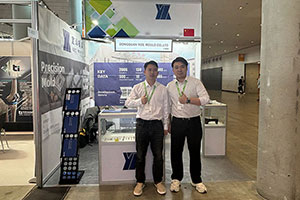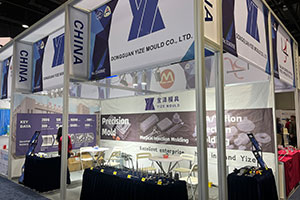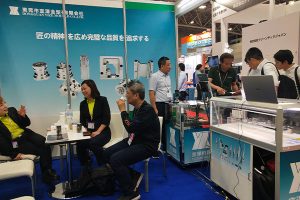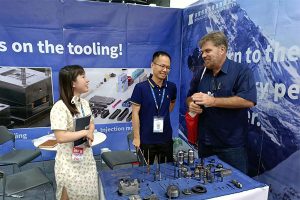Exploring Tungsten Carbide Conductive Blocks
In the intricate operation of modern electronic circuits, the tungsten carbide conductive block stands out like a silent “energy messenger,” storing energy in the form of an electric field and […]
In the intricate operation of modern electronic circuits, the tungsten carbide conductive block stands out like a silent “energy messenger,” storing energy in the form of an electric field and playing an indispensable key role. Its unique charging and discharging principles have made it shine in numerous electronic devices. Next, let’s delve into the charging and discharging principles of the tungsten carbide conductive block.
I. Basic Structure of the Tungsten Carbide Conductive Block: The Foundation of Energy Storage
The core structure of the tungsten carbide conductive block consists of two conductive parallel plates, with an insulating or dielectric material filled between them. This seemingly simple structure actually holds immense potential for energy storage. It’s like a meticulously designed energy warehouse, where the parallel plates are the “shelves” and the insulating or dielectric material is the “divider.” Together, they enable the tungsten carbide conductive block to store energy in an electric field and release it into the circuit when needed. Moreover, the tungsten carbide conductive block comes in various shapes, such as round and flat, but regardless of its shape, its core structure remains consistent, providing a solid foundation for energy storage and release.
당사의 공장 사업: 초경 부품, 금형 부품, 의료용 사출 금형, 정밀 사출 금형, 테플론 PFA 사출 성형, PFA 튜브 피팅. 이메일: [email protected],whatsapp:+8613302615729.
II. Charging and Discharging Processes of the Tungsten Carbide Conductive Block: The Flow of Energy
Charging Process: The Convergence of Energy
When the 텅스텐 카바이드 is connected to a direct – current (DC) power supply, a journey of energy convergence quietly begins. The positive terminal of the power supply is connected to one plate of the conductive block, and the negative terminal is connected to the other plate. At this point, under the powerful influence of the electric field, the charges on the plates start a well – organized redistribution. Positive charges, like well – trained soldiers, quickly gather on one plate, while negative charges, like loyal partners, closely follow and accumulate on the other plate.
During this process, due to the presence of the insulating or dielectric material, the charges between the two plates do not flow freely. Instead, they store energy bit by bit through the action of the electric field. As the charging time progresses, the number of charges on the plates gradually increases, like a steadily rising staircase, and the electric field strength also strengthens accordingly. When the charging reaches a certain level, the tungsten carbide conductive block becomes like a treasure trove filled with energy, ready to power the circuit at any time.
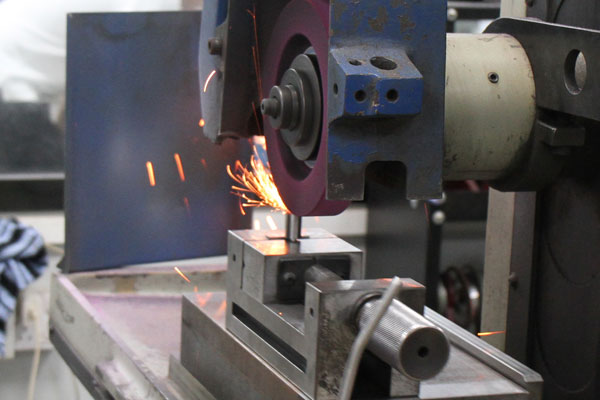
Discharging Process: The Release of Energy
When it is necessary to release the energy stored in the tungsten carbide conductive block, all you need to do is connect it to the circuit that needs power. At this moment, under the direction of the electric field, the charges on the plates start to flow in an orderly manner, forming a stable current and releasing the energy into the circuit continuously.
During the discharging process, as the charges continue to flow, the number of charges on the plates gradually decreases, and the electric field strength weakens like the receding tide. When the charges are completely released, all the energy in the tungsten carbide conductive block is unreservedly released into the circuit. It is worth mentioning that since there is no current flowing through the conductive block after the charging process is completed, in a DC circuit, the conductive block can be equivalent to an open circuit or R = ∞, and the voltage vc across the conductive block cannot change abruptly. This characteristic allows it to function stably in the circuit.
III. Working Principle of the Tungsten Carbide Conductive Block: The Secret of Energy Storage and Release
The working principle of the tungsten carbide conductive block is deeply rooted in the basic principles of electric field energy storage and charge flow. During the charging process, the electric field acts like a diligent porter, carefully storing energy in the insulating or dielectric material between the two plates. During the discharging process, the electric field transforms into a generous giver, releasing the stored energy and forming a current through the orderly flow of charges to provide a continuous supply of energy to the circuit.
This unique working principle endows the tungsten carbide conductive block with many advantages. Firstly, it stores energy in the form of an electric field, making its energy storage density as high as a compressed spring, allowing it to store a large amount of energy in a small volume and greatly improving space utilization. Secondly, the charging and discharging processes of the tungsten carbide conductive block are as stable as a precision clock, providing a stable current output to ensure the normal operation of the circuit. In addition, it has a long service life and good reliability, like a loyal partner, always accompanying electronic devices in stable operation.
IV. Application Examples of the Tungsten Carbide Conductive Block: A Versatile Player in the Electronic World
With its unique charging and discharging principles, the tungsten carbide conductive block has a wide range of applications in various electronic devices, making it a versatile player in the electronic world.
In the flash of a camera, the tungsten carbide conductive block acts like an energy master. As an energy – storage component, it quickly releases energy at the moment of the flash, providing sufficient energy for the flash to capture every wonderful moment clearly.
In electronic circuits, the tungsten carbide conductive block is almost everywhere. It is like a “quick – charge battery,” always providing a stable current output for the circuit to ensure the normal operation of electronic devices.
In industrial control systems, the tungsten carbide conductive block functions like an intelligent steward. It can store and release energy to achieve various complex control functions, improving the efficiency and precision of industrial production.
V. Conclusion: The Tungsten Carbide Conductive Block, a Brilliant Star in the Electronic Field
As a passive device that stores energy in the form of an electric field, the tungsten carbide conductive block occupies a pivotal position in modern electronic circuits. Its unique charging and discharging principles are like a magical key, opening the door to efficient energy storage and release, and endowing it with many advantages such as high energy storage density, stable charging and discharging processes, and a long service life.
Through a detailed elaboration of the basic structure, charging and discharging processes, working principle, and application examples of the tungsten carbide conductive block, we seem to have lifted the veil of mystery surrounding it and gained a deeper understanding of its important role in electronic devices. It is believed that in the future, with the continuous progress of technology, the tungsten carbide conductive block will show its infinite potential in more fields and contribute more to the development of the electronic world.


